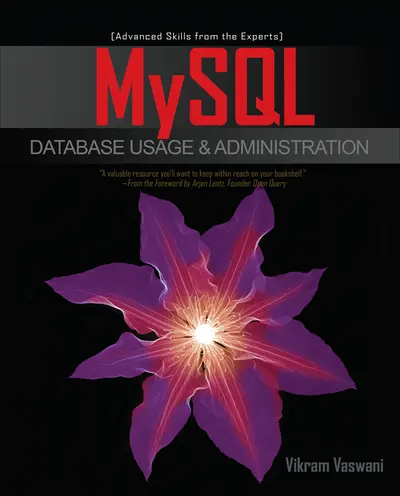My Account Details

ISBN10: 0071605495 | ISBN13: 9780071605496

Step 1 . Download Adobe Digital Editions to your PC or Mac desktop/laptop.
Step 2. Register and authorize your Adobe ID (optional). To access your eBook on multiple devices, first create an Adobe ID at account.adobe.com. Then, open Adobe Digital Editions, go to the Help menu, and select "Authorize Computer" to link your Adobe ID.
Step 3. Open Your eBook. Use Adobe Digital Editions to open the file. If the eBook doesn’t open, contact customer service for assistance.
Publisher's Note: Products purchased from Third Party sellers are not guaranteed by the publisher for quality, authenticity, or access to any online entitlements included with the product. Take your MySQL skills to the top tier Maximize every powerful feature available in MySQL 5.1 with hands-on instruction from a MySQL expert. This definitive guide shows you how to use MySQL's advanced suite of data management tools, optimize performance and reliability, and secure and administer a robust RDBMS. MySQL Database Usage & Administration includes detailed code examples in each chapter to highlight real-world applications of the material covered. If you want to get the most out of MySQL, you need this practical handbook. Understand MySQL's features, technical architecture, subsystems, and commands Make database design decisions that optimizre performance, storage, and reliability Write complex queries using joins, subqueries, and views Group SQL statements into transactions and execute them atomically Build and use sophisticated stored procedures and functions Automate database operations with triggers and scheduled events Import and export data in different formats, includiong SQL, CSV, and XML Optimize server and query performance Administer a secure, high availability MySQL RDBMS Manage users and control access Perform database maintenance, replication, backup, and recovery Vikram Vaswani is the founder and CEO of Melonfire (www.melonfire.com), a consultancy firm with special expertise in open-source tools and technologies. His previous books include MySQL: The Complete Reference, PHP: A Beginner's Guide, and PHP Programming Solutions.
Need support? We're here to help - Get real-world support and resources every step of the way.